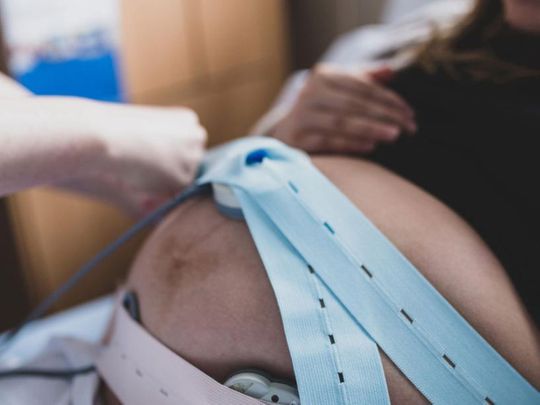
Giving birth is one of the most intense experiences of any woman’s life, and it’s important that you feel empowered and listened to during your labour and birthing experience. The best place to start? By arming yourself with knowledge about your birth options.
While birthing methods can be an emotionally loaded topic – some women claim they feel judged for how they gave birth, while others believe the term ‘natural birth’ should be abandoned because it alienates C-section mothers for example – it’s perfectly possible to have a fully empowered and even joyful labour and birth, whatever your chosen method of delivery.
Will either method be easy and totally pain-free? It depends – neither method guarantees that, and both can involve recovery time and some impact on your pelvic floor. But there are pain relief options , gentle birthing approaches and calming techniques that can be used with either physiological birth or a Caesarean.
When it comes to safety of each method, that very much depends on your own body and individual pregnancy. Dr Britt Classuon, Consultant Obstetrician & Gynaecologist at Genesis Healthcare Center Dubai outlines the benefits and disadvantages of C-section and natural birth:
“Approximately one in three deliveries in the first world today, is a caesarean section and doctors have, over the last decades finetuned their caesarean technique to perfection so we can first of all declare that both c-sections and normal deliveries are extremely safe today.
“If a pregnant woman is healthy, low risk, full-term and with the baby's head down, normal delivery is usually the safest option, but going into labour is always a leap of faith - you don't know for sure that the baby will deliver normally. Many women fear an emergency caesarean, a forceps delivery or generally the interventions obstetricians have in store to get reluctant babies out.
Normal delivery is usually the safest option, but going into labour is always a leap of faith
“The planned caesarean, however, is only marginally higher in risk than a normal birth. Many are attracted to the predictability, knowing exactly where, when and how your baby will arrive so that you can plan your life. Some women also relish the thought of no labour pains- although of course, the will need pain relief in the recovery period. Some women, however, really mourn not having delivered normally, and feel they miss out on a valuable female experience.
“Recovery is faster after normal delivery, but planned C-sections can go home and look after their baby (but not carry older children) after a few days. And no one recovers as slowly as the lady unfortunate enough to require a complex instrumental delivery.
“As obstetricians we ask ourselves when we look at our full-term pregnant patient - taking into account all available information, such as the patient's age, height, body shape, mental and physical health, the size and position of the baby and what happened at any previous deliveries - how likely is this patient to achieve a normal birth? And how would the patient herself like to deliver?
“If the patient wishes to deliver normally and is likely to be successful, then this is usually the best option, but if the patient is very unlikely to deliver normally, or if birth is unsafe for her and/ or her baby, then a C-section is preferred and should be advised. And of course, there is a grey area in between, where not even the experienced obstetrician can predict the outcome. In those cases, an honest and open discussion with the patient about chances of normal birth should take place.
“Pregnant women are not all the same; their risks and strengths vary. We cannot, and shouldn't, have a single recommendation for all. The caring and wise doctor individualises care of pregnant women, and there is no ‘one size fits all' in childbirth.”
Dr Britt is a Swedish trained Consultant Obstetrician and Gynaecologist who has been practicing in the UAE for 12 years and works with both high and low-risk obstetrics. She believes that the complete obstetrician must both be capable of performing a complex caesarean delivery, abnormal presentations and multiple births safely, but also a very non-invasive waterbirth well (as well as of course anything in between the two extremes).
Read more:








